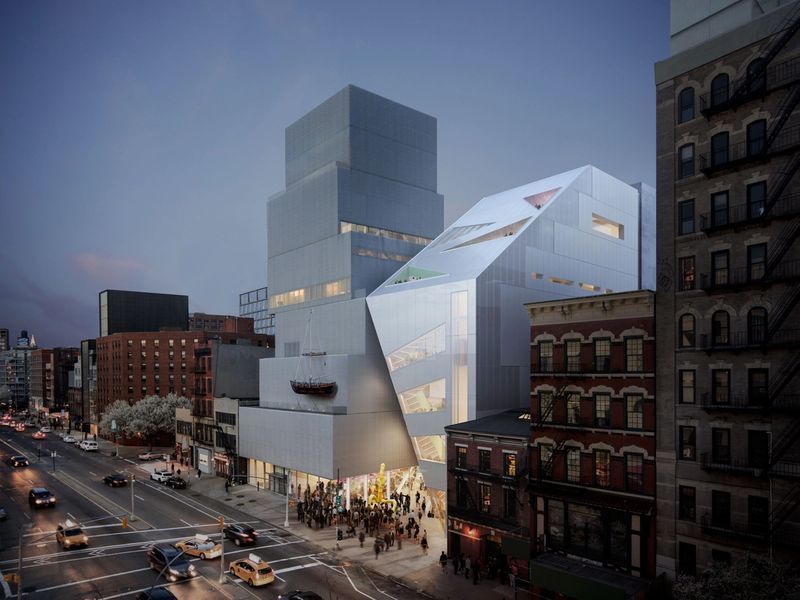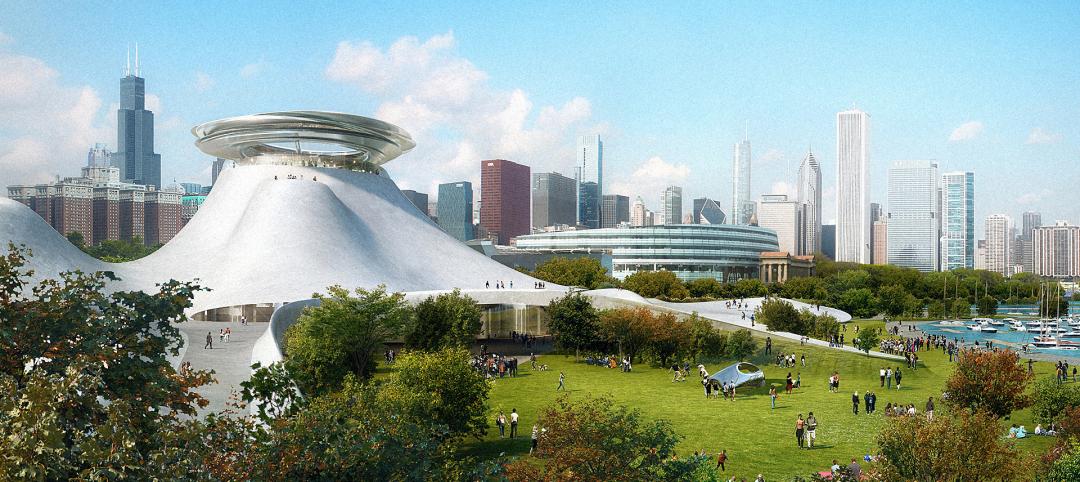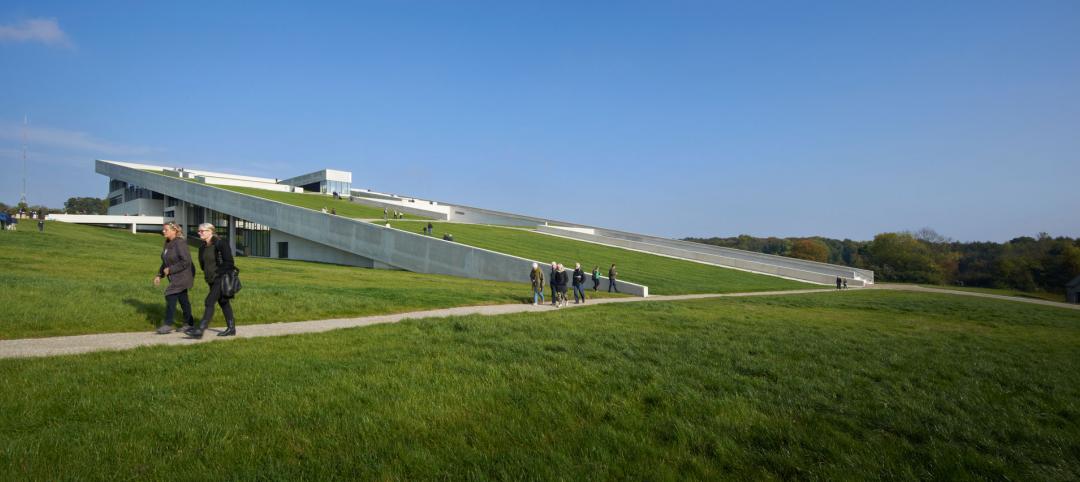The New Museum recently announced plans for its second building, a seven-story, 60,000-sf structure that will include three floors of galleries, doubling the museum’s exhibition space.
The new building will replace the current 50,000 sf building at 231 Bowery. The new building will include an atrium stair to improve vertical circulation and offer views of the surrounding neighborhood. The stair and the new entry will open the museum up to the city by aligning to the terminus of Prince Street. The new building will also provide three new elevators and additional public spaces and services such as an expanded lobby and bookstore, an upper level forum connecting to the existing Skyroom, and a new 80-seat restaurant.
A total of 10,096 sf of exhibition space will be added with the new galleries connecting to the existing galleries on three levels (second, third, and fourth floors). The ceiling heights will align on each floor to create expanded space for exhibitions and horizontal flow between the buildings. The expanded spaces can be used singularly across the floor-plate to host larger exhibitions or separately for diversity and curatorial freedom.
See Also: Frank Lloyd Wright Trust announces new Visitor and Education Center
The building’s lower levels will be devoted to back of house and storage; the ground floor will house the restaurant, expanded lobby, bookstore, and a public plaza set back at street level; the second, third, and fourth floors will house galleries; the fifth floor will house NEW INC; the sixth floor will house an artist-in-residence studio and a forum for events and gathering; and the seventh floor will house the education programming and additional events.
The façade uses a laminated glass with metal mesh to provide a simple, unified exterior alongside the main SANAA-designed New Museum building.
Related Stories
| Nov 14, 2014
Bjarke Ingels unveils master plan for Smithsonian's south mall campus
The centerpiece of the proposed plan is the revitalization of the iconic Smithsonian castle.
| Nov 12, 2014
Chesapeake Bay Foundation completes uber-green Brock Environmental Center, targets Living Building certification
More than a decade after opening its groundbreaking Philip Merrill Environmental Center, the group is back at it with a structure designed to be net-zero water, net-zero energy, and net-zero waste.
| Nov 7, 2014
NORD Architects releases renderings for Marine Education Center in Sweden
The education center will be set in a landscape that includes small ponds and plantings intended to mimic an assortment of marine ecologies and create “an engaging learning landscape” for visitors to experience nature hands-on.
| Nov 5, 2014
The architects behind George Lucas' planned Chicago museum unveil 'futuristic pyramid'
Preliminary designs for the $300 million George Lucas Museum of Narrative Art have been unveiled, and it looks like a futuristic, curvy pyramid.
| Nov 3, 2014
IIT names winners of inaugural Mies Crown Hall Americas Prize
Herzog & de Meuron's iconic 1111 Lincoln Road parking garage in Miami Beach, Fla., is one of two winners of the $50,000 architectural prize.
| Oct 29, 2014
Diller Scofidio + Renfro selected to design Olympic Museum in Colorado Springs
The museum is slated for an early 2018 completion, and will include a hall of fame, theater, retail space, and a 20,000-sf hall that will showcase the history of the Olympics and Paralympics.
| Oct 23, 2014
Prehistory museum's slanted roof mimics archaeological excavation [slideshow]
Mimicking the unearthing of archaeological sites, Henning Larsen Architects' recently opened Moesgaard Museum in Denmark has a planted roof that slopes upward out of the landscape.
| Oct 16, 2014
Perkins+Will white paper examines alternatives to flame retardant building materials
The white paper includes a list of 193 flame retardants, including 29 discovered in building and household products, 50 found in the indoor environment, and 33 in human blood, milk, and tissues.
| Oct 15, 2014
Harvard launches ‘design-centric’ center for green buildings and cities
The impetus behind Harvard's Center for Green Buildings and Cities is what the design school’s dean, Mohsen Mostafavi, describes as a “rapidly urbanizing global economy,” in which cities are building new structures “on a massive scale.”
| Oct 12, 2014
AIA 2030 commitment: Five years on, are we any closer to net-zero?
This year marks the fifth anniversary of the American Institute of Architects’ effort to have architecture firms voluntarily pledge net-zero energy design for all their buildings by 2030.
















